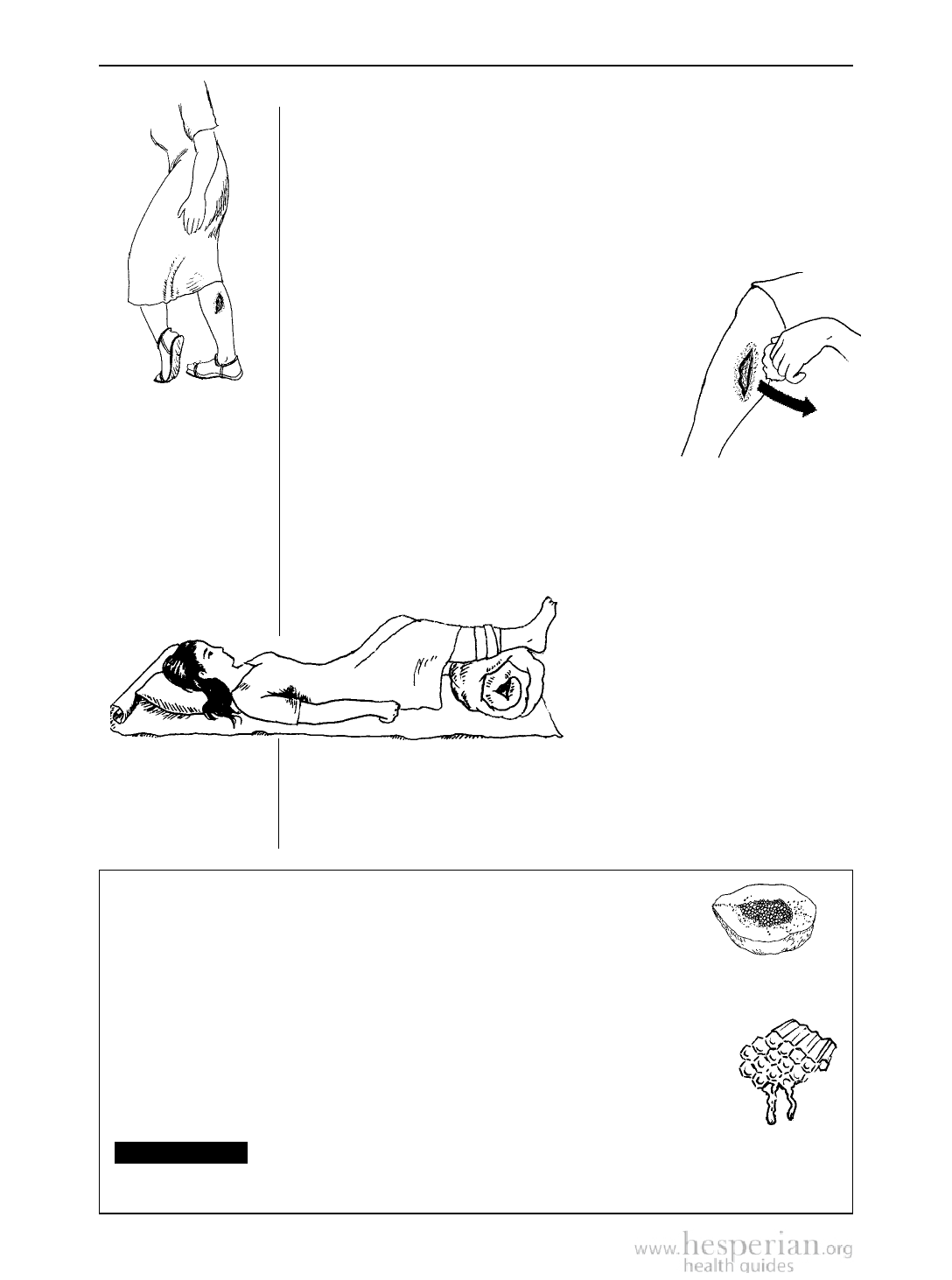
306 HIV and AIDS
Wounds and sores
Wounds are caused by an injury that breaks the skin. Sores
are often caused by bacteria or pressure on the skin (pressure
sores). They can happen very easily to people who stay in bed a
long time. Take special care of any cut, wound, or open sore so
that it does not become infected.
General care of open wounds and sores:
1. Wash the wound or sore with clean water
and mild soap at least once a day. Wash
around the edge of the wound first, then
wash from the center out to the edges. If
possible, use separate pieces of cloth for
each wipe.
2. If the wound has pus or blood in it,
cover the area with a clean piece of cloth
or bandage. Leave the bandage loose, and change it every
day. If the wound is dry, it can be left open to the air. It will
heal more quickly that way.
3. If the wound is on the legs or feet, raise the leg above the
level of the heart. Do this as
often as possible during the
day. During the night, sleep with
the feet raised. Avoid standing
or sitting for a long time. Some
walking is helpful.
4. Wash soiled cloth and bandages in soap and water, then put
them in the sun to dry. Or boil them for a short time and
hang them to dry. If the cloths and bandages will not be
used again, burn them or throw them in a pit latrine.
Home treatments for pressure sores
Papaya (paw paw): This fruit contains chemicals that help make the
old flesh in a pressure sore soft and easy to remove.
Soak a sterile cloth or piece of gauze in the ‘milk’ that comes from the trunk or
green fruit of a papaya plant. Pack this into the sore. Repeat this 3 times a day.
Honey and sugar: These will kill germs, help prevent infection, and
speed healing. Mix honey and sugar together into a thick paste. Press
this deep into the sore, and cover with a thick, clean cloth or gauze
bandage. (Molasses or thin pieces of raw sugar can also be used.)
IMPORTANT Clean out and refill the sore at least 2 times a day. If the
honey and sugar becomes too filled with liquid from the sore, it will feed germs
rather than kill them. For more information on pressure sores see page 142.
Where Women Have No Doctor 2012